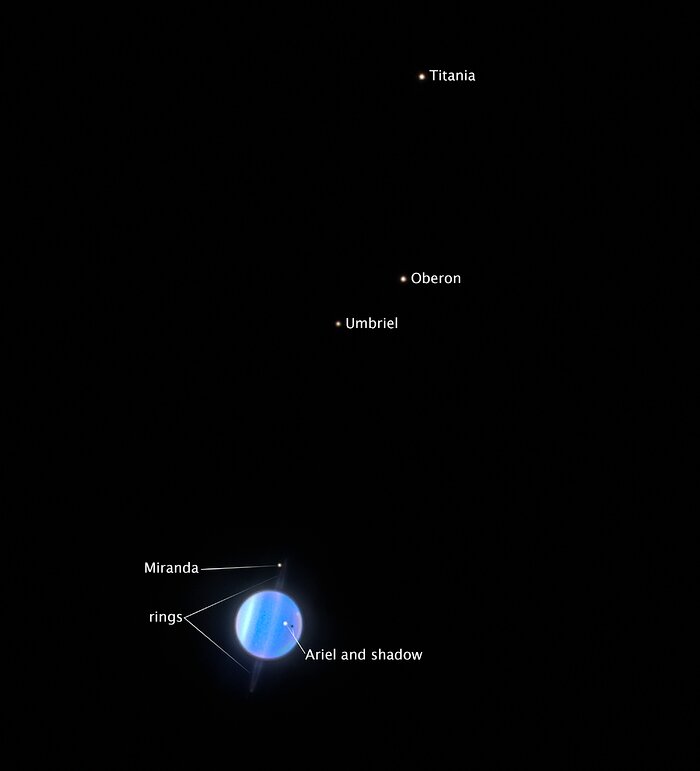Uranus and its four largest moons
Astronomers studied the four largest moons of Uranus with the NASA/ESA Hubble Space Telescope. At a distance of 3.2 billion kilometres from Earth, the icy satellites Ariel, Umbriel, Titania, and Oberon are tiny points of light. But by using Hubble’s ultraviolet capabilities, astronomers could deduce their surface characteristics.
Scientists predicted that the planet’s magnetic field would make the moons two-toned, with each moon’s trailing side being darker than the leading side (the hemisphere facing its direction of travel around Uranus). But surprisingly, they found the opposite on the two outer large moons, Titania and Oberon. These moons appear darker on the leading side as they sweep up dust like bugs on a windshield as they travel along their orbits.
They also appear to be shielding the two inner moons, Ariel and Umbriel, from the dark dust. The inner moons show no difference in brightness from side to side.
[Image description: Four small, white dots appear widely spaced in a steep, roughly jagged, diagonal line from top right to bottom left. These white dots appear against a solid black background. A fifth small, white dot is superimposed on a much larger blue sphere, which is also on the black background. This medium-blue sphere has pink, white, and lighter blue diagonal striations. Also superimposed on this striated sphere is a tiny black dot, which is just to the right and slightly beneath the white dot. Encircling the blue sphere at the same steep diagonal angle as the white dots and striations are thin, ghostly, white, Saturn-like rings. The four white dots are labeled, from top right to bottom left, “Titania,” “Oberon,” “Umbriel,” and “Miranda.” The white dot and its accompanying black dot, which are both superimposed on the blue sphere, are labeled “Ariel and shadow.” The faint, Saturn-like rings encircling the blue sphere are labeled simply “rings.”]
Credit:NASA, ESA, STScI
